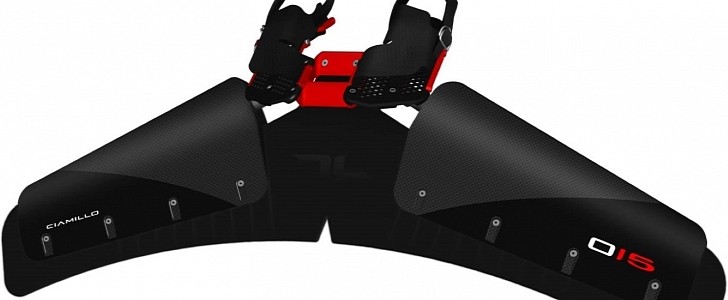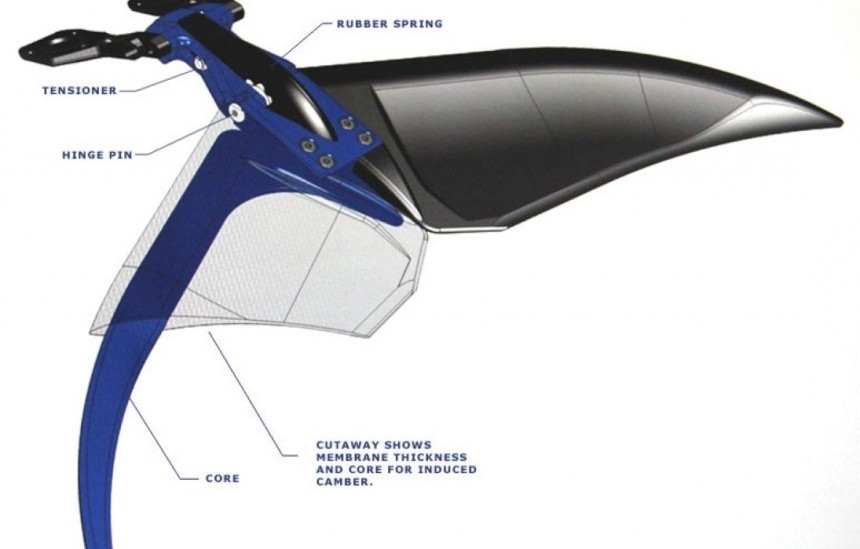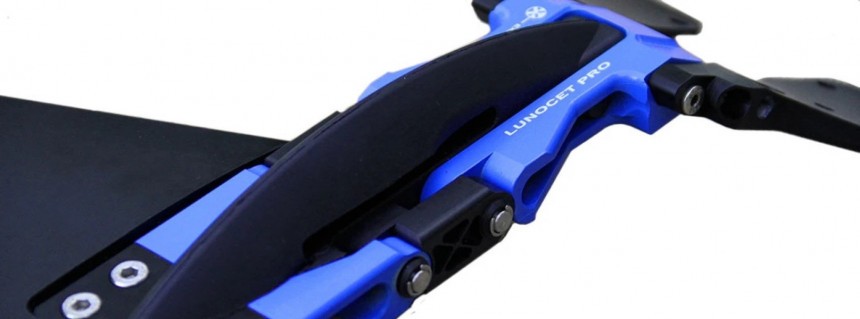Ted Ciamillo is a pinion-head turned aqua-man. He brought us the Subhuman Project back in the day. Remember, the one where he planned to cross the Atlantic Ocean in a manpowered submarine?
Even though the Subhuman Project wasn’t really ever heard fom again, Ted Ciamillo didn’t stop there. During the previous trans-Atlantic endeavor, Ted had discovered and put together an amazing piece of equipment needed to power his submarine, the Lunocet.
But what’s a Lunocet? The Lunocet is the piece of equipment that Ted planned on using for forward propulsion through waters. What it really is, though, is just a giant fin that was put on the rear of the submarine. But giant fins have been done before, true. However, something that hadn’t been done before was to try and mimic as much as possible the overall design and function of an already existing machine of the seas, the dolphin.
It makes sense, if you ask me. Their design and function has been honed over thousands of years in the aquatic environment. So Ted sought ought to find the secrets of dolphin propulsion.
His journey led him to find a man by the name of Fish, Frank Fish. No joke. Dr. Frank Fish is a world-renowned marine biologist with a main focus on dolphin anatomy and function. His research and data on energetics and hydrodynamics of aquatic vertebrates was the main source of information for Ted's design.
Using information from CAT scans that Dr. Fish provided, Ted was able to reconstruct the same form and function of a dolphin tail right down to even the way the bones and cartilage work together to produce propulsion.
The way it works is quite simple. As the name suggests, it makes one fin out of our two human fins. The mono-fin comes equipped with a pair of shoes that are part of the overall structure. Those two shoes are held together by a support which extends down towards the fin.
That support takes the two separate legs of the diver and readies them for the mono-fin system. Following that support down towards the fin, you’ll see a small section that looks like the backbone of a dolphin tail. Usually made of a durable but flexible rubber, the backbone offers rigidity and flexibility to bring the fin back into the initial position after it has been kicked to ready it for the next movement.
The remainder of the fin looks, feels, and even works exactly like that of aquatic mammals. It flexes in all the right places, keeps rigid where it needs to, and does it so well, that Michael Phelps reports nearly a ninety percent increase in speed when using a Lunocet.
There came a time when Ciamillo was asked to come down to a patent office to ‘get his.’ But when that time came, he refused, saying something along the lines of “How can I patent something that is already present in the natural world."
After the initial designs used on the Subhuman Project, in which no one knows what happened to it, the Lunocet started catching the attention of the outside world. And for an easy tow-grand for the pro model, it definitely has my attention.
But what’s a Lunocet? The Lunocet is the piece of equipment that Ted planned on using for forward propulsion through waters. What it really is, though, is just a giant fin that was put on the rear of the submarine. But giant fins have been done before, true. However, something that hadn’t been done before was to try and mimic as much as possible the overall design and function of an already existing machine of the seas, the dolphin.
It makes sense, if you ask me. Their design and function has been honed over thousands of years in the aquatic environment. So Ted sought ought to find the secrets of dolphin propulsion.
Using information from CAT scans that Dr. Fish provided, Ted was able to reconstruct the same form and function of a dolphin tail right down to even the way the bones and cartilage work together to produce propulsion.
The way it works is quite simple. As the name suggests, it makes one fin out of our two human fins. The mono-fin comes equipped with a pair of shoes that are part of the overall structure. Those two shoes are held together by a support which extends down towards the fin.
That support takes the two separate legs of the diver and readies them for the mono-fin system. Following that support down towards the fin, you’ll see a small section that looks like the backbone of a dolphin tail. Usually made of a durable but flexible rubber, the backbone offers rigidity and flexibility to bring the fin back into the initial position after it has been kicked to ready it for the next movement.
There came a time when Ciamillo was asked to come down to a patent office to ‘get his.’ But when that time came, he refused, saying something along the lines of “How can I patent something that is already present in the natural world."
After the initial designs used on the Subhuman Project, in which no one knows what happened to it, the Lunocet started catching the attention of the outside world. And for an easy tow-grand for the pro model, it definitely has my attention.







